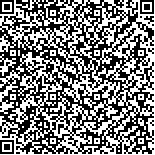郭现军,李哲,蔡西国.运动训练联合地黄多糖对脑缺血再灌注大鼠神经功能的影响[J].中华物理医学与康复杂志,2020,42(4):289-294
扫码阅读全文

|
| 运动训练联合地黄多糖对脑缺血再灌注大鼠神经功能的影响 |
|
| |
| DOI:10.3760/cma.j.issn.0254-1424.2020.04.001 |
| 中文关键词: 地黄多糖 运动训练 脑缺血再灌注 |
| 英文关键词: Rehmannia glutinosa polysaccharides Exercise training Cerebral ischemia Reperfusion |
| 基金项目:河南省医学科技攻关计划项目(201806132) |
|
| 摘要点击次数: 5791 |
| 全文下载次数: 6407 |
| 中文摘要: |
| 目的 探讨运动训练联合地黄多糖对脑缺血再灌注大鼠神经功能恢复的影响及其作用机制。 方法 选取SD大鼠60只,采用随机数字表法在60只大鼠中取10只大鼠作为假手术组,剩余50只均建立脑缺血再灌注损伤模型。将造模成功的50只大鼠采用随机数字表法分为模型组、运动训练组、地黄多糖10 mg组、地黄多糖20 mg组和地黄多糖40 mg组,每组10只大鼠。模型组、假手术组和运动训练组大鼠均每日喂服生理盐水,连续6周,运动训练组在此基础上增加为期6周的运动训练,地黄多糖10 mg组、地黄多糖20 mg组和地黄多糖40 mg组的运动方法同运动训练组,但将生理盐水替换为对应剂量的地黄多糖。干预6周后,评定6组大鼠神经功能缺损评分,并采用Morris水迷宫实验对6组大鼠进行学习和记忆能力评价,同时采用酶联免疫吸附法(ELISA)测定6组大鼠血清中的白细胞介素6(IL-6)、白细胞介素-1β(IL-1β)、肿瘤坏死因子-α(TNF-α)水平,采用蛋白质定量(BCA)法测定蛋白含量,采用硝酸还原酶法检测NO含量,采用ELISA法检测SOD含量,采用硫代巴比妥酸(TBA)法检测MDA含量,采用蛋白免疫印迹法(Western blot)检测NF-κB通路中磷酸化p65(p-p65)、磷酸化核因子κB抑制蛋白α(p-IκBα)蛋白的表达。 结果 干预6周后,模型组、运动训练组和3个地黄多糖干预组(即地黄多糖10 mg组、地黄多糖20 mg组和地黄多糖40 mg组)的神经功能缺损评分较假手术组均显著升高(P<0.05)。与模型组比较,运动训练组和3个地黄多糖干预组大鼠的神经功能缺损评分均显著降低(P<0.05)。与运动训练组比较,3个地黄多糖干预组大鼠的神经功能缺损评分均显著降低(P<0.05)。干预6周后,模型组的学习能力潜伏期显著高于假手术组的(60.32±10.02)s,记忆能力潜伏期亦显著低于假手术组的(P<0.05)。运动训练组和3个地黄多糖干预组的学习能力潜伏期均显著低于模型组,记忆能力潜伏期均显著高于模型组(P<0.05)。且3个地黄多糖干预组的学习能力潜伏期均显著低于运动训练组,记忆能力潜伏期均显著高于运动训练组(P<0.05)。干预6周后,模型组大鼠血清中的IL-6、IL-1β、TNF-α水平均显著高于假手术组(P<0.05)。与模型组比较,运动训练组和3个地黄多糖干预组大鼠血清中的IL-6、IL-1β、TNF-α水平均有不同程度的下降(P<0.05)。3个地黄多糖干预组大鼠血清中的IL-6、IL-1β、TNF-α水平与运动训练组比较(P<0.05)。干预6周后,模型组大鼠的脑组织SOD活性较假手术组显著降低,而其NO和MDA水平则显著升高(P<0.05)。与模型组相比,运动训练组和3个地黄多糖干预组大鼠的脑组织SOD活性均显著升高,NO、MDA水平较模型组则显著降低(P<0.05)。3个地黄多糖干预组大鼠的脑组织SOD活性显著高于运动训练组,其NO、MDA水平则显著低于运动训练组(P<0.05)。干预6周后,与假手术组比较,模型组大鼠脑组织中的p-p65、p-IκBα蛋白水平显著增加(P<0.05);与模型组比较,运动训练组和3个地黄多糖干预组大鼠脑组织中的p-p65、p-IκBα蛋白水平均显著降低(P<0.05);3个地黄多糖干预组大鼠脑组织中的p-p65、p-IκBα蛋白水平较运动训练组均显著降低(P<0.05)。 结论 运动训练联合地黄多糖可修复脑缺血再灌注大鼠的神经功能,提高大鼠的学习和记忆能力,其作用机制可能与运动训练联合地黄多糖可降低氧化应激反应、抑制NF-κB通路激活和减缓炎症的进展有关。 |
| 英文摘要: |
| Objective To explore the effect of combining exercise training with the administration of rehmannia polysaccharide on the recovery of neurological function after cerebral ischemia and reperfusion, and its mechanism. Methods Sixty Sprague-Dawley rats were randomly divided into a sham operation group, a model group, an exercise training group, a rehmannia polysaccharide 10mg group, a rehmannia polysaccharide 20mg group and a rehmannia polysaccharide 40mg group, each of 10. The cerebral ischemia-reperfusion injury model was induced in all of the rats except those of the sham operation group. After the modelling, the rats not receiving rehmannia polysaccharide were given normal saline solution daily for 6 weeks. The other rats received rehmannia polysaccharide at 10mg, 20mg or 40mg dosage as appropriate. All of the rats exercised. After the intervention, the 6 groups were evaluated through neurological deficit scoring, and their learning and memory ability was assessed using the Morris water maze test. The levels of interleukin-6 (IL-6), interleukin-1β (IL-1β) and tumor necrosis factor-alpha (TNF-α) in serum as well as superoxide dismutase (SOD) levels were measured using enzyme-linked immunosorbent assays. Protein, methylene dioxyamphetamine (MDA) and nitric oxide levels were detected using the bicinchonininc acid method, the nitrate reductase method and the thiobarbituric acid method respectively. Western blotting was used to detect the expression of phosphorylated p65 (p-p65) and phosphorylation of nuclear factor κB inhibitor protein α (p-IκBα). Results After 6 weeks of treatment the average neurological deficit scores of all groups except the sham operation group had improved significantly. Compared with the model group, the average neurological deficit scores of the training group and the drug groups had decreased significantly. Compared with the exercise training group, the average neurological deficit scores of the three rehmannia polysaccharide groups had decreased significantly. The average latency of the model group was at that point significantly longer than that of the sham operation group, while its memory ability was significantly weaker. However, the average learning latencies of the exercise training group and the 3 drug groups were significantly lower than that of the model group, while their memory was significantly better. The average learning latencies of the 3 drug groups were all significantly shorter than that of the exercise training group, while their memory was significantly better. After the 6 weeks of medication the average IL-6, IL-1β and TNF-α levels of the model group were significantly higher than those of the other 5 groups. Those of the 3 drug groups were significantly different from that of the exercise training group. The average SOD activity in the brain tissue of the model group was significantly lower than that of the sham operation group, while the average levels of NO and MDA were significantly higher. Compared with the model group, the average SOD activity in the exercise group′s brain tissue and that of the three rehmannia glutinosa groups had increased significantly, while the levels of NO and MDA had decreased significantly. The average SOD activity of the three drug groups was significantly higher than that of the exercise training group, while the average levels of NO and MDA were significantly lower. After 6 weeks of medication, compared with the sham operation group, the average levels of p-p65 and p-IκBα protein in the brain tissue of the model group had increased significantly, while compared with the model group, the average levels of p-p65 and p-IκBα protein in the exercise training group and the three drug groups had decreased significantly. Moreover, those levels in the three drug groups were significantly lower than in the exercise training group. Conclusion Combining exercise with polysaccharide administration can better restore neurological function after cerebral ischemia and reperfusion, at least in rats. It improves learning ability and memory, perhaps by reducing oxidative stress, inhibiting activation of the NF-κB pathway, and slowing the inflammatory response. |
|
查看全文
查看/发表评论 下载PDF阅读器 |
| 关闭 |
|
|
|